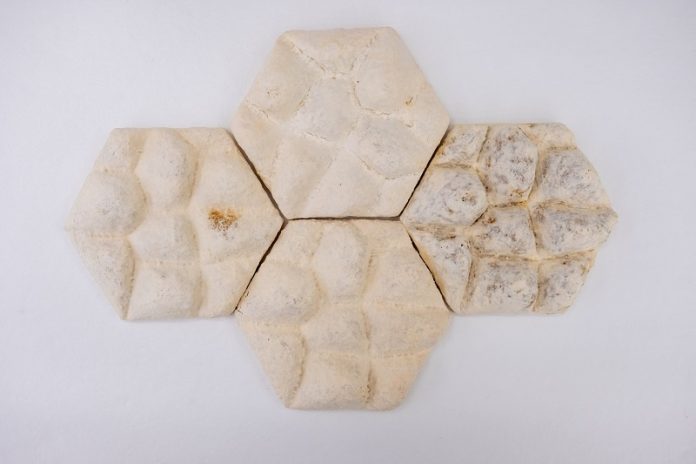
Scientists in Singapore have created special wall tiles made from fungi that could help cool buildings naturally, without using electricity.
These “fungi tiles” are inspired by the way elephants stay cool in hot weather—even though they don’t have sweat glands.
The team from Nanyang Technological University (NTU Singapore), working with local design firm bioSEA, used mycelium (the root-like part of fungi) mixed with bamboo waste to make the tiles.
They added a wrinkled texture that copies elephant skin, which helps elephants stay cool by holding water and allowing it to slowly evaporate.
This design also traps cool air and increases the surface area, boosting the tile’s cooling power.
Tests showed that tiles with the elephant-skin design cooled down 25% faster than flat ones, and in wet conditions, they cooled 70% faster.
This makes them especially useful in tropical climates with high humidity and rain.
The researchers suggest placing the flat side of the tile against the building and leaving the textured side facing out to get the best cooling effect.
The tiles were made by mixing oyster mushroom mycelium with bamboo shavings, oats, and water, then pressing the mix into molds with the elephant-skin texture. The tiles were left to grow in the dark for a few weeks, then dried in an oven to stop the fungi from growing further.
Mycelium is a biodegradable material that’s very porous, making it a great insulator. It performs as well—or even better—than common synthetic insulation materials but is much more eco-friendly.
Traditional insulation materials are often synthetic and can harm the environment throughout their lifecycle. In contrast, these new tiles are made from waste and are fully natural.
The researchers also found that the tile’s surface repels water, allowing droplets to sit on the surface and evaporate slowly. This helps cool the tile even more efficiently, especially during rain.
The building industry is responsible for nearly 40% of energy-related emissions, so finding greener ways to cool buildings is important. The scientists are now working on making the tiles stronger and more durable, as well as testing them on real buildings.
One challenge is that growing the tiles takes three to four weeks, and switching to new materials like this may be slow due to existing building practices. Still, the team believes their elephant-skin fungi tiles are a step toward a cooler, greener future—turning nature’s ideas and waste materials into smart solutions for modern living.



